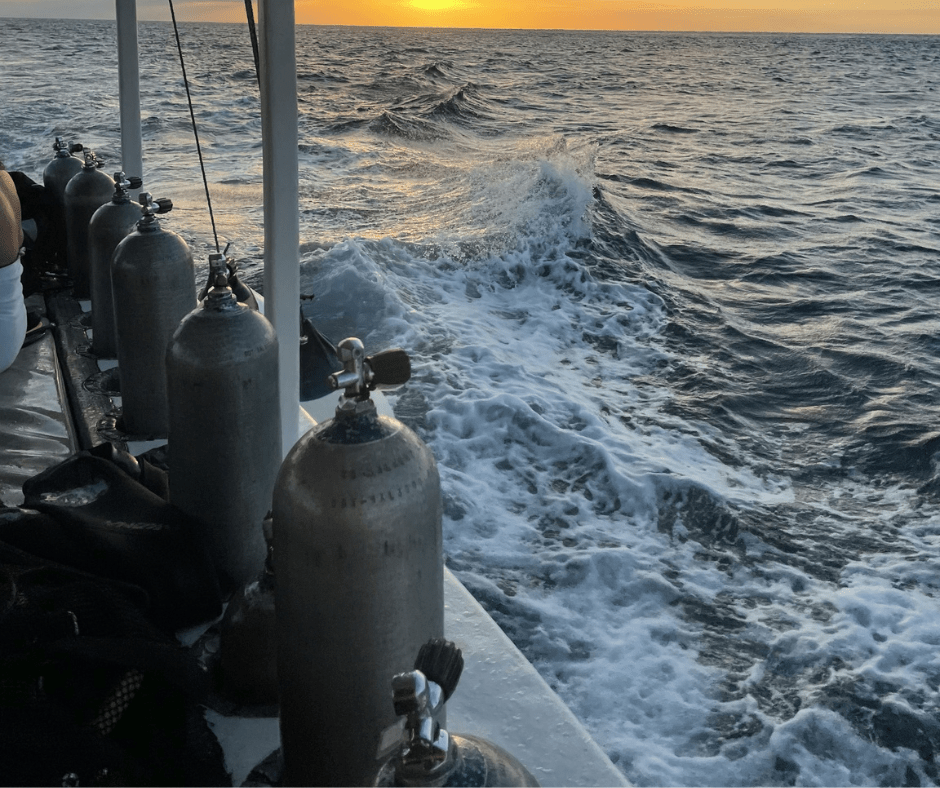Can SCUBA Tanks Explode?
Candace Reno April 7th, 2024 Posted In: Articles Tags: SCUBA
Can SCUBA tanks explode? This is a very interesting question and good to ask before you purchase or handle a SCUBA tank. Proper care, handling, and storage of SCUBA tanks are needed to help keep them in good working condition and prevent an explosion.
SCUBA Tanks Should Not Explode
The biggest thing to understand is that SCUBA tanks should not explode if properly handled and cared for. What’s in a SCUBA tank that might make you concerned of any explosion? The main reason you might think a SCUBA tank could explore would be if you put too much gas in it. Or, if it got really hot, causing the air to expand and the tank to explode.
Luckily, every SCUBA tank comes with a burst disk. Burst disks sense expanding pressure to the limit of the specific tank. If this maximum pressure is reached, the burst disk breaks. This allows the gas inside the tank to escape, preventing an explosion.

5 Reasons SCUBA Tanks Can Explode
There are a few reasons that SCUBA tanks could explode, although it is rare. Here are 5 common reasons a SCUBA tank might explode:
- Standing, Unattended Tanks. I’ve personally seen an instance whereby a SCUBA tank fell over, breaking the tank valve as the tank was under pressure with a full tank of air. This tank shot up into the air, landed in the bed of a truck, spun around inside the truck bed before finally settling down as the air ran out, severely damaging the truck. Although technically this was not an explosion, it was a very serious incident that could have been avoided. Never leave a SCUBA tank standing unattended. Lay it down. The exception is that SCUBA tanks are usually stored standing up, but they should be in a secure location where they cannot fall over.
- Burst Disk Failure. As mentioned above, the burst disk is what prevents an overfilled tank or a tank that is heating up in the sun from exploding. However, burst disk failure can happen if it’s old and has wear and tear or if it was improperly installed.
- Tank Valve Malfunction. It is rare that your tank valve would malfunction. Regular inspections of your SCUBA tank, discussed below, help prevent this. Also, make sure you have the proper tank valve and first stage connections.
- Corrosion. Corrosion inside or outside your SCUBA tank can lead to thinning of the wall of your tank, whether it is aluminum or steel. When placed under pressure, a thin walled tank could explode.
- Contamination. Any contaminates that get inside your SCUBA tank could be very harmful to breathe in while under pressure while diving. These same contaminates also pose a risk for tank explosion. Always get your SCUBA tank filled at a reputable air fill station to avoid risk.
SCUBA Tank Inspections
In order to help prevent unwanted incidents with SCUBA tanks, there are generally two main SCUBA tank inspections that need to be performed on all tanks. This is especially important as this is your breathing gas source underwater and you want to make sure the gas inside is safe to breathe.
Visual SCUBA Tank Inspection
Visual inspections are done every year on SCUBA tanks. Your local dive shop should be able to handle this. The gas inside is drained from the tank and the technician looks inside for any rust or cracks. If the tank has corrosion at all, the tank will be unable to be used again in diving. If it passes, a sticker will be placed on the tank with the date the inspection was performed to let others know the tank is in good working order.
SCUBA Tank Hydrostatic Test
Hydrostatic tests are usually sent out for testing from your local dive shop. These are done every 3-5 years, depending on the tank. In these tests, the SCUBA tank is drained of all the gas and filled with water. The tank is also placed in a little pool of water. The amount of water displaced in the pool of water surrounding the tank is measured.
There is an acceptable amount of stretch the tank is allowed. If the tank does not return to its normal form, then the tank is decommissioned and not allowed to be used again for SCUBA. If it passes, the technician stamps the date into the tank.
Filling SCUBA Tanks
Dive operations look for the above inspection dates on any tank prior to filling it. If a SCUBA tank is not within the inspection dates, it is unsafe to be filled and could pose a risk of tank explosion during filling. Also, most compressors used to fill tanks have an automatic shut off at a pre-determined working pressure of the tank. This prevents overfilling of the tank and explosions that could happen due to over pressurizing the tank.
Bad SCUBA Tanks
There were also a couple of decades where some SCUBA tanks had issues with cracks forming in the walls. This led to some SCUBA tank explosions. Luckily, most of these tanks should be out of commission.
In the end, a SCUBA tank explosion is very rare. Make sure you get your SCUBA tank regularly serviced and only filled at reputable SCUBA air fill stations. Also, do your part in not leaving your SCUBA tank standing unattended. This is something we all see too often at diving locations and can lead to serious harm.

